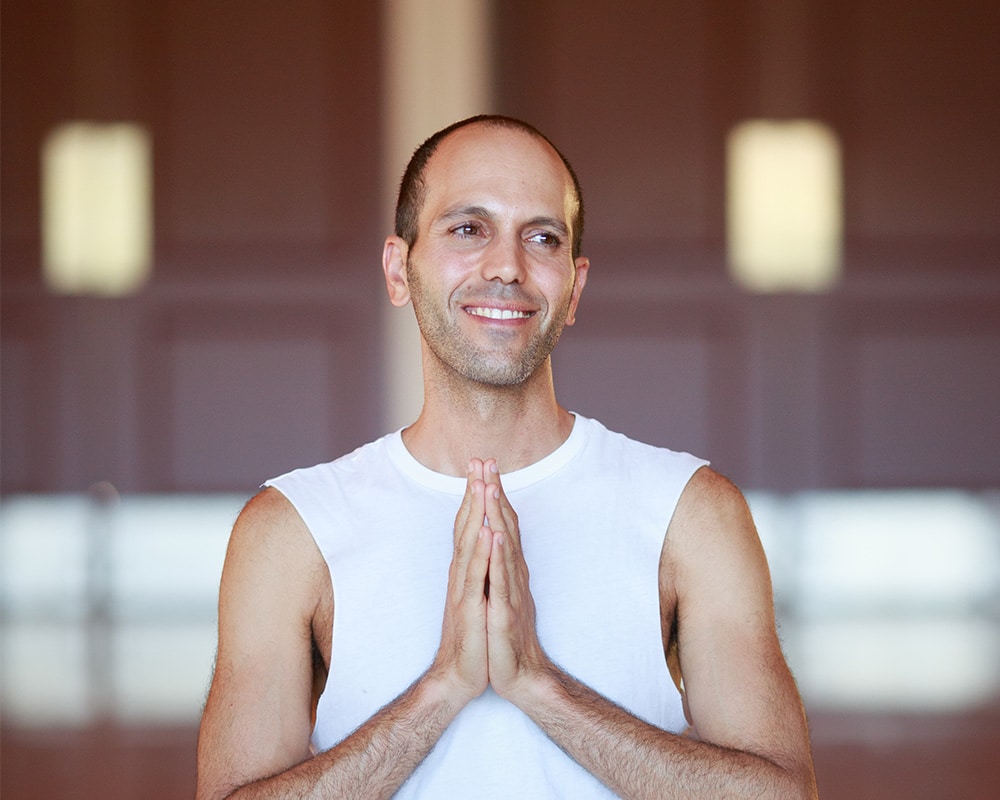In the last century, asana became very popular in the west under the general name “yoga”. Teachers such as BKS Iyengar and Pathabi Jois brought the practice of asana to America and garnered a great following. While this has had many positive effects on the lives of yoga practitioners in the west, most of us in the US and elsewhere think of asana – the physical poses and sequences – as the whole of yoga.
A documentary called “Enlighten Up” explores a dichotomy in the yoga world today between the general western view of yoga as predominantly asana, and the Indian view that asana is merely for the health of the body and that the real yoga is bhakti yoga, complete unwavering devotion to god. It is true that most yoga styles today neglect meditation and study, and overemphasize the practice of asana. Training the body to relax and surrender into challenges can of itself translate to a simpler more joyous lifestyle off the mat. However, it is difficult to sustain and ground the benefits of our practice without a good balance between physical, intellectual, and meditative approaches.
On the other hand, spiritual and religious communities that focus primarily on meditation and sometimes also on studying the mind and the emotions can have tremendous transformational effects on the practitioner. Yet these traditions often altogether overlook the great potential of asana for the transformation of consciousness. When we approach asana practice as a testing ground for our patience, our ability to surrender, and our willingness to be loving and compassionate towards the body, asana becomes a great vehicle for relieving suffering – starting with ourselves and naturally expanding to our fellow beings.
As we come to the mat for asana practice, we can begin by asking how we might be causing difficulty to ourselves. Simply by directing our attention to the body we can begin to identify the ways that we strain ourselves and cause ourselves pain and discomfort. While it can be disheartening to see all the ways in which we are out of balance in our bodies and moreover, it can be tempting to turn to blame and victimhood, asana begins with taking responsibility for the fact that we ourselves are causing our own tension and discomfort. Our ability to transcend the habitual patterns that do not serve us depends on our willingness to observe and accept these patterns as they manifest.
A good question to ask when practicing asana, then, is: “What am I doing?” We can ask what we are doing at this moment with the shoulders and neck, the muscles of the face, with the breath, and even with the thinking mind. We might begin to notice that we habitually formulate our observations as passive victims. “My hips are tense. I don’t know why my shoulders are rising up towards my ears.” Taking responsibility for our experience means that we instead begin to say , “I am tensing my legs. I don’t know why I am lifting my shoulders up to my ears.” Then, the potential for real change can arise as we are empowered to respond to what we see with skillful action. Another helpful question might now arise: “What else could I be doing?” Thus, without rejecting what we observe and striving to change it, we can simply and playfully consider our options more broadly and openly. This in itself offers expansive potential to the mind.
Sometimes simply noticing that we are tensing can be enough to relieve the tension, and the realization that we have been unaware of our own choices and actions regarding our body can inspire us to establish a loving commitment to ourselves and to our practice. If our patterns turn out to have habitual roots that run too deep to be changed simply by noticing them, we get an opportunity to engage our creativity and ask: “What else could I be doing?” A simple yoga asana practice can be helpful in cultivating our creativity and exploring our relationship with the body. Yet it is good to have some guidance from an insightful teacher who can help us notice whether our choices are always the most compassionate.
Yes, yoga-asana is enough to change your life. Just begin by lovingly giving up on ambition and perfectionism. And try be nice to yourself about it.







